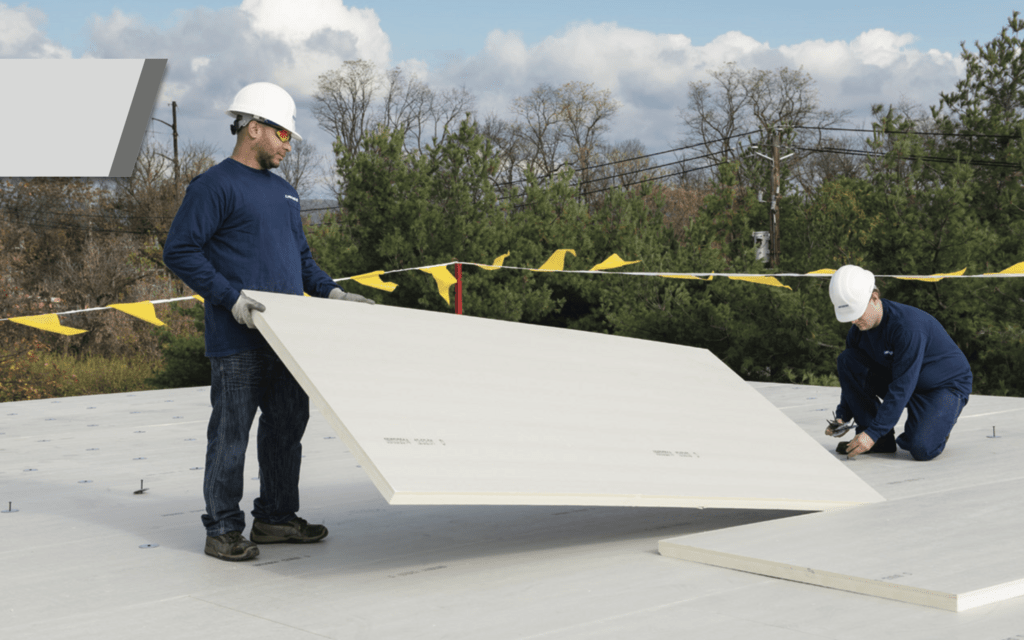How often do you think of your roof? If you’re like most people, it’s probably not that much. People generally take their roofs for granted, assuming they’ll perform their functions.
However, the roof is too important to ignore. Commercial buildings rely on their roofs for several purposes.
That’s why you need the best type of commercial roofing available. In many cases, this means you need single-ply membrane roofs.
Single-ply membranes are one of the most popular options for commercial roofing. These membranes are sheets of rubber that companies ballast, fasten, or chemically adhere to insulation. This way, it forms a layer of protection for your commercial building.
However, there are several different types of single-ply membrane roofing. Here in Effingham, IL, there are three in particular that often lead the industry. These are TPO roofing, PVC roofing, and EPDM roofing.
If you’re unfamiliar with these roofing types, don’t worry! We’ll explore them and their differences in the guide below.
TPO Roofing
TPO stands for thermoplastic polyolefin, and it’s one of the fastest-growing commercial roofing systems in the industry. TPO roofing systems include a single layer of synthetics and reinforcing scrim that helps it cover flat roofs.
TPO roofing membranes come in sheets that are either 10, 12, or 20 feet wide. From there, manufacturers roll up the membrane and take it to the commercial facility.
One of the great advantages of TPO roofing is its naturally reflective surface. This feature allows the membrane to reflect UV rays. In doing so, it helps keep the building from becoming overheated.
This effect saves your company money in the long run, helping your building cut down on energy bills in the summer. TPO membranes can also achieve Underwriters Laboratories Class A fire resistance listings.
They accomplish this by adding fire retardant chemicals during the industrial process. TPO single-ply membranes typically last for 15-20 years. Over time, their seams can come apart, flashings can fail, and the membrane can puncture.
PVC Roofing
PVC roofing refers to polyvinyl chloride. In simpler terms, this means it’s a membrane made from plastic. It also includes a low percentage of oil and petroleum.
Although it contains oil and petroleum, it has less than its PVC and EPDM counterparts. PVC roofing membranes fall under the “cool” roofing category as well. This cool status makes it both Energy Star and Cool Roof certified.
PVC roofing is an excellent choice for flat, low-sloped roofs. It has a durable composition, proving immensely strong for roofing material.
Its strength gives it some unique advantages. First, because it can withstand many conditions, roofers can install this membrane by heat-welding the seams. Other weaker membranes require adhesive or taped seam methods.
Why does it matter if PVC roofing utilizes heat-welding methods? This approach allows the PVC roof to expand and contract with the building. As weather changes throughout the year, it causes building materials to shift.
Over time, this process of expansion or contraction causes wear and tear on a roof. In residential, shingle-based roofs, it often causes the shingles to crack and break.
A PVC roof can protect against this. In addition, PVC roofs can protect a structure from chemical infiltration and UV rays. They even have fire-resistant properties!
As mentioned before, PVC roofs are cool roofs. Because of this, they can resist damage and discoloration from solar radiation.
EPDM Roofing
The final of the leading single-ply roofing membranes is EPDM. This term stands for ethylene propylene diene monomer.
In short, EPDM membranes have a synthetic rubber composition that makes them incredibly durable and flexible. People often use it on flat roofs for commercial buildings. However, some people also use it for carports and patio roofs as well.
You can find EPDM roofing in black or white versions. The white edition is usually just an additional layer that lays on top of existing EPDM roofing layers.
The two colors also help make your building more energy-efficient. The white can reflect heat away in the warmer months, allowing the building to stay cool. The black membrane, however, can absorb heat in the cooler months.
Either option helps you save money on energy bills. They allow you to spend less money heating or cooling the building through your HVAC system.
Longevity is another favorite EPDM feature. EPDM roofing can usually last for up to 30 years, making it one of the longest-lasting membranes. Keep in mind, though, that a well-maintained TPO membrane can also last this long.
Another helpful feature is its lightweight. This membrane typically weighs around half a pound per square foot. As a result, it’s much lighter than the average asphalt shingle.
PVC and TPO roof membranes each have resistance to several types of damage. However, EPDM’s rubber qualities give it a unique advantage.
For instance, let’s say a hailstorm strikes your area. Because EPDM is basically rubber, it will cause hailstones to bounce away. You can even get thicker membranes installed to protect against bigger hailstones!
Find Your Single-Ply Membrane Roofs With Us!
As you can see, single-ply membrane roofs have significant advantages for industrial roofing. All you have to do is find the best roofing contractor to install your roof.
To that end, consider working with us! We offer comprehensive roofing services to our Effingham, IL community.
If you need a new roof, contact us today to get an estimate on our single-ply membrane roofs and their installation costs. We’ll provide you with a free inspection to see what material would prove best for your purposes.
Maybe you already have a roof membrane, but it’s suffered damage over the years. If so, that’s no problem either! We offer roofing maintenance and repairs services to get your roof back to top condition.

